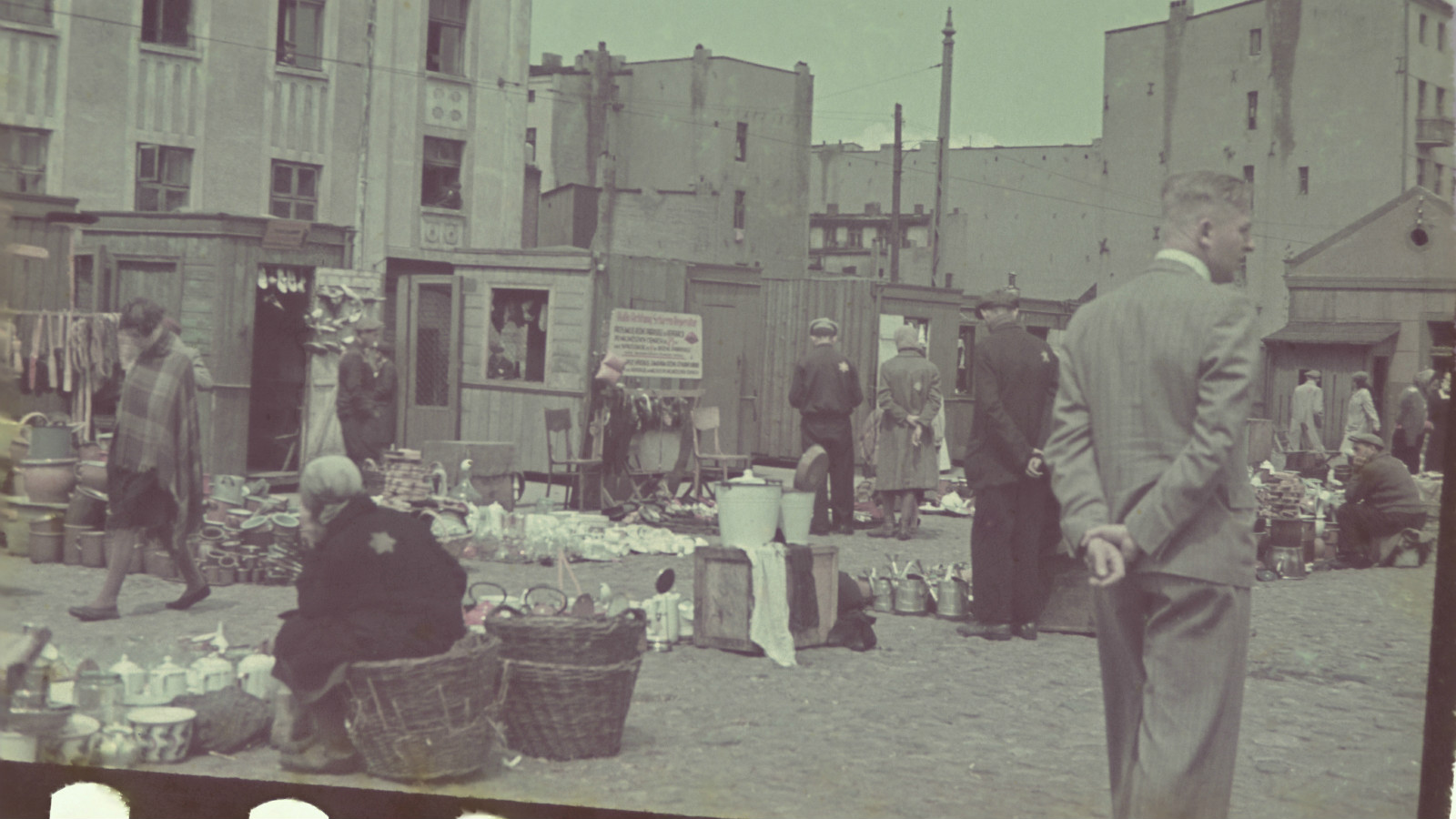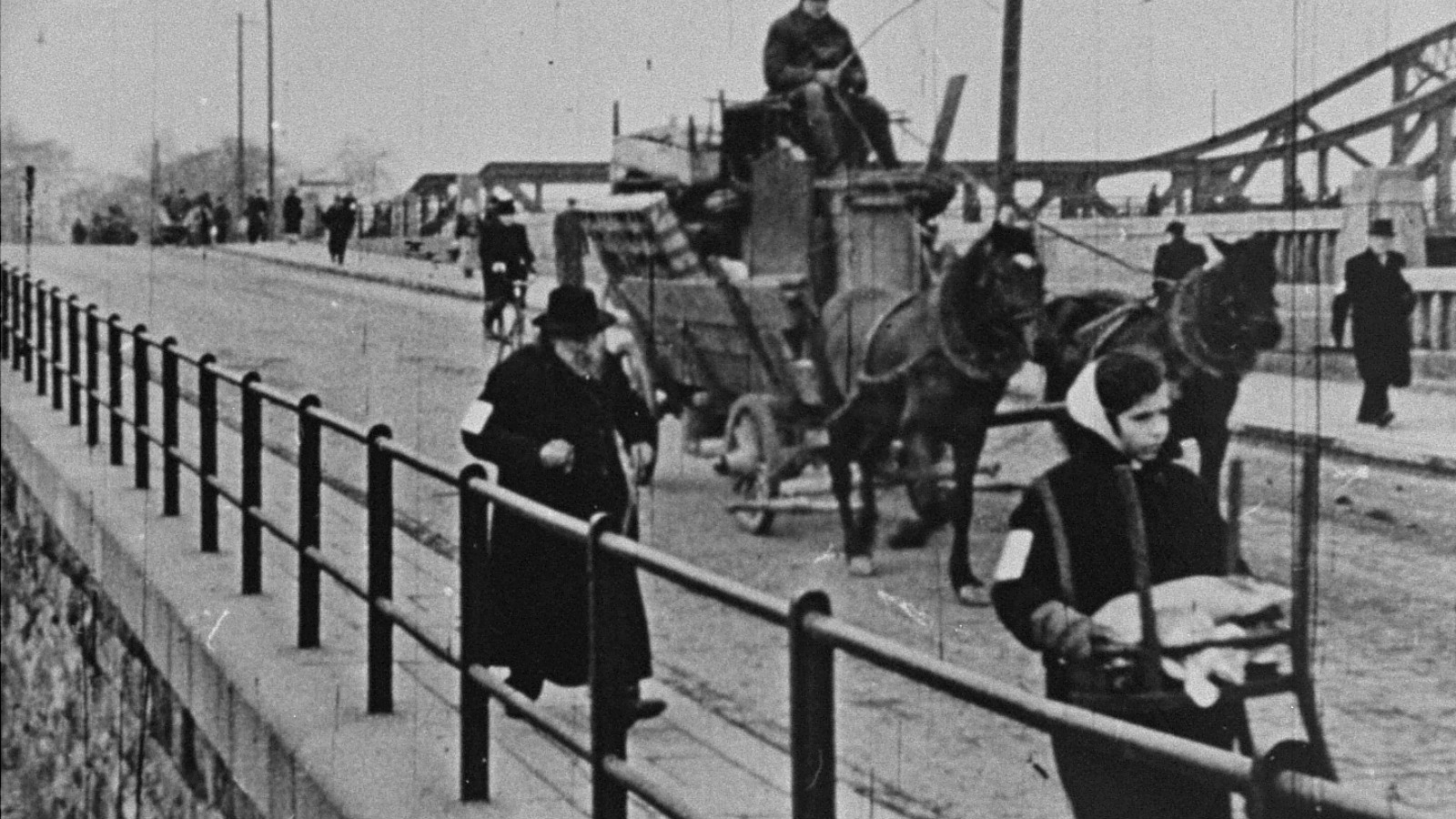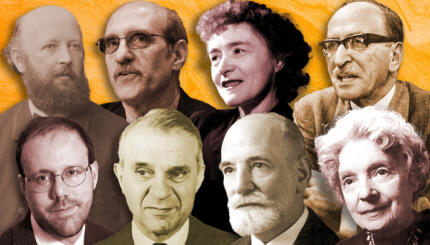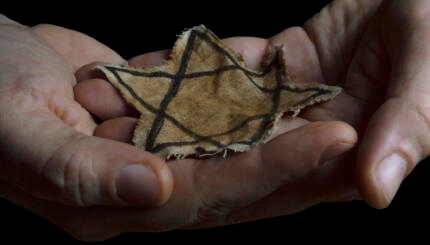During World War II, the Nazis established more than 400 ghettos in order to isolate Jews from the non-Jewish population and from neighboring Jewish communities. The Germans regarded the establishment of ghettos as a provisional measure to control and segregate Jews. The assumption behind this separation was to stop the Jews, viewed by the Nazis as an inferior race, from mixing with and thus degrading the superior Aryan race.
Nazi high officials also believed that the Jews would succumb to the unfavorable living conditions of the ghetto, including lack of food, water, and living space. Furthermore, the ghettos served as round-up centers that made it more convenient to exterminate large numbers of the Jewish population later.
What Ghettos Looked Like
The ghettos in Nazi-occupied Europe — primarily Poland — were often closed off by walls, barbed-wire fences, or gates. Ghettos were extremely crowded and unsanitary. Starvation, chronic food and fuel shortages, and severe winter weather led to repeated outbreaks of epidemics and to a high mortality rate. Ghettoization, however, was seen as a temporary situation, and in many places the ghettos existed only for a brief time. With the implementation of the “Final Solution” in 1942, the Germans began to destroy the ghettos by deporting the Jewish occupants to forced-labor and extermination camps.
With your help, My Jewish Learning can provide endless opportunities for learning, connection and discovery.
The first ghetto was established in Lodz, Poland, on February 8, 1940. Approximately 155,000 Jews, almost one-third of the city’s total population, were forced to live in the Lodz ghetto. As Lodz was a center of textile production, this ghetto was of considerable economic importance to the German war machine. Jews played an important role as workers in the textile factories there. For this reason, the deportation of Jews from the Lodz ghetto was only completed in August 1944.
The Warsaw ghetto was the largest ghetto established in Poland. Approximately 450,000 Jews were crowded into an area of 1.3 square miles that was the Warsaw ghetto. Other major ghettos were located in Krakow, Bialystok, Lvov, Lublin, Vilna, Kovno, Czestochowa, and Minsk.
Conditions in the Ghettos

Conditions in the ghettos were appalling. For example, the majority of the apartments in the Warsaw ghetto were unheated during winter, and the Nazis decided that the inhabitants of the Warsaw ghetto could survive on an official food allocation of 300 calories per day (compared with 634 calories for the Poles and 2,310 for the Germans).
The Nazis ordered Jews to wear identifying badges or armbands with a yellow Star of David on them in the ghettos. Many Jews were also required to perform forced labor for the German Reich. The Nazi-appointed Jewish councils (Judenrat) and Jewish police maintained order within the ghettos and were forced by the Germans to facilitate deportations to the extermination camps.

The ghettos, however, were still full of life. Illegal activities, such as smuggling food or weapons, joining youth movements, or holding cultural events such as concerts, often occurred without the approval of the Jewish councils (though in many cases the Jewish councils did in fact sponsor cultural activities).
Historian Emanuel Ringelblum, an inhabitant of the Warsaw ghetto, founded a clandestine organization that aimed to provide an accurate record of events taking place in the ghetto. Ringelblum’s project came to be known as the Oneg Shabbat (“Joy of the Sabbath”). Oneg Shabbat records were hidden in a series of milk cans that were buried in various areas of the ghetto. While only a few of these milk cans were recovered after the war, they proved to be an invaluable source documenting life in the ghetto and German policy toward the Jews of Poland.
Jewish Resistance in the Ghetto

Between July and mid-September 1942, the Germans deported at least 300,000 Jews from the Warsaw ghetto. As a response to the deportations, several Jewish underground organizations created armed self-defense units known as the Jewish Fighting Organization (Zydowska Organizacja Bojowa or ZOB) and the Jewish Fighting Union (Zydowski Zwiazek Wojskowy or ZZW). The Germans intended to begin deporting the remaining Jews in the Warsaw ghetto on April 19, 1943, the eve of Passover. The renewal of deportations provoked an armed uprising within the ghetto.

Though organized military resistance was soon broken, individuals and small groups hid or fought the Germans — who had planned to liquidate the Warsaw ghetto in three days–holding out for a month, until May 16, 1943.The Warsaw ghetto uprising was the first urban uprising in German-occupied Europe. It was also the largest and most successful Jewish uprising during the war and, as such, has served as a symbol of Jewish resilience and resistance to Nazi persecution.
READ: The Warsaw Ghetto Uprising
After the Warsaw ghetto uprising, revolts occurred in Vilna, Bialystok, Czestochowa, and in several smaller ghettos. In August 1944, the Nazis completed the destruction of the last major ghetto in Lodz. In contrast, in Hungary, ghettoization did not begin until the spring of 1944 after the German invasion and occupation of the country. In less than three months, the Hungarian police, in coordination with the Germans, deported nearly 440,000 Jews from ghettos in Hungary to extermination camps. The majority were sent to the Auschwitz-Birkenau extermination camp.



